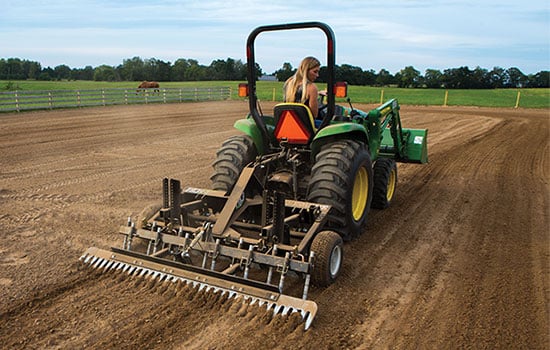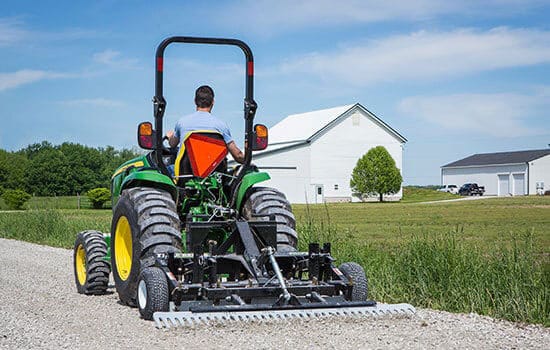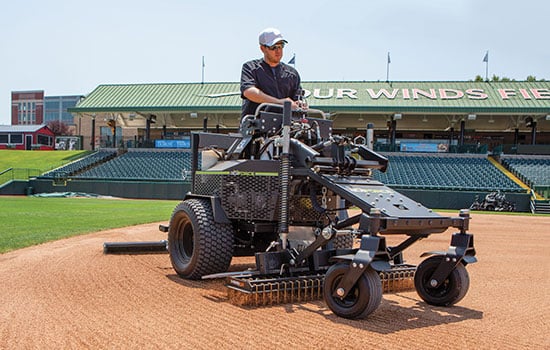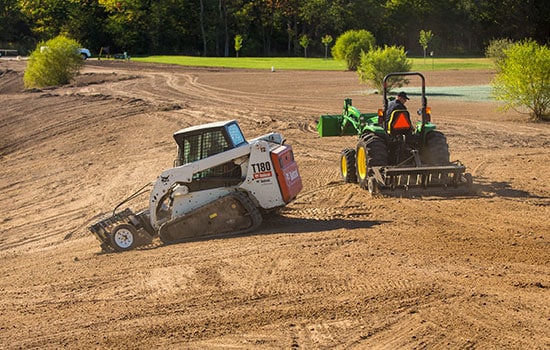ABI Classic Manure Spreader – Clinton Anderson TV Show Segment
Transcript
Scott, I don’t know how familiar people are, but you guys actually don’t just dominate the industry when it comes to arena drags and horse footing, but you guys make a lot of other products for the horse barn. You know, a hobbyist, etc. One of the things that you’re very proud of is manure spreaders. Talk to us a little bit about, you know, why you got into this industry, why you guys are leading it, etc.
For every hundred horse people, only 10 have an arena. Everyone has to take care of the manure. So you’ve got to take care it, but you’ve got to do it in a way that’s healthy for the environment, that’s efficient for you, doesn’t get it spread all over you, where you have to take a shower when you’re done doing it. So, you know, ABI is about inventing. We’re about innovation. So even in our manure spreaders, which may look like just a traditional classic manure spreader, we have done things that are different. When you when you were getting rid of the manure, especially if you are a small what I a call a ranchette. All right. Small five, ten, fifteen acre piece of property. And you don’t have a lot of pasture that you can spread your manure on and you don’t decompose and you want to get rid of it. You can’t just have a spreader that’s got big paddles off the back and just trows big clumps of manure out. And you’ve got to shred that. You’ve got to turn into a fine particle because the UV rays of the Sun will hit those smaller particles and the nitrogen will work its way into the ground and your horses will be able to feed on that pasture faster. So, you know, if you just have a manure spreader just throws huge clumps out there. Your horses may not be able to graze for two, three weeks. But when you shred it and make small particles and evenly spread it, then you’re going to be able to turn the horses in a week.
It’s going to decompose a lot a lot faster.
That’s the bottom line. It takes care of a lot of the fly problems, the parasite problems, the ingestion of the horses, getting that into their system when they’re trying to feed on that pasture. So you don’t want to just dump your manure out there in the pasture. You want to break it down. Every one of manure spreaders has this, what we call the shredding mechanism, knifing action. You know, this 185 behind us has multiple paddles. This 50 cubic has a single paddle. And as the manure is being pushed back, it’s actually being shredded and broken down to smaller pieces before it is systematically flung out.
Now Scott, I’ve never seen this shredding action on any manure spreaders before.
Yeah, it’s very rare. If another manufacturer does offer it, it’s an option. It’s pretty expensive. It’s on every one of ours. We won’t sell it without it on there because we believe that that’s part of the management of your pasture, not just getting rid of manure. But what we did is we took steel, that’s a Cor-10 steel. It’s the same thing that’s used on shipyards. It’s the same thing that major statues are made out of. It will not rust through. In the lifetime of this body, This body will not get rust all the way through it. It might get a little surface rust, but then it seals itself off. So these bodies are made to last forever, not three, four or five years like competitors.
So basically you have something from a real small ranch, two or three acres, two to four horses. Anyway, to the bigger models that would suit somebody like me. A lot of horses in training. They don’t always have to have a big tractor, they pull them with an ATV. The smaller models, etc.. OK, show me some of the other innovation you guys have done the last couple years.
Yeah, you bet. We’ve got a bunch of stuff for ATVs. Let me show you that.



